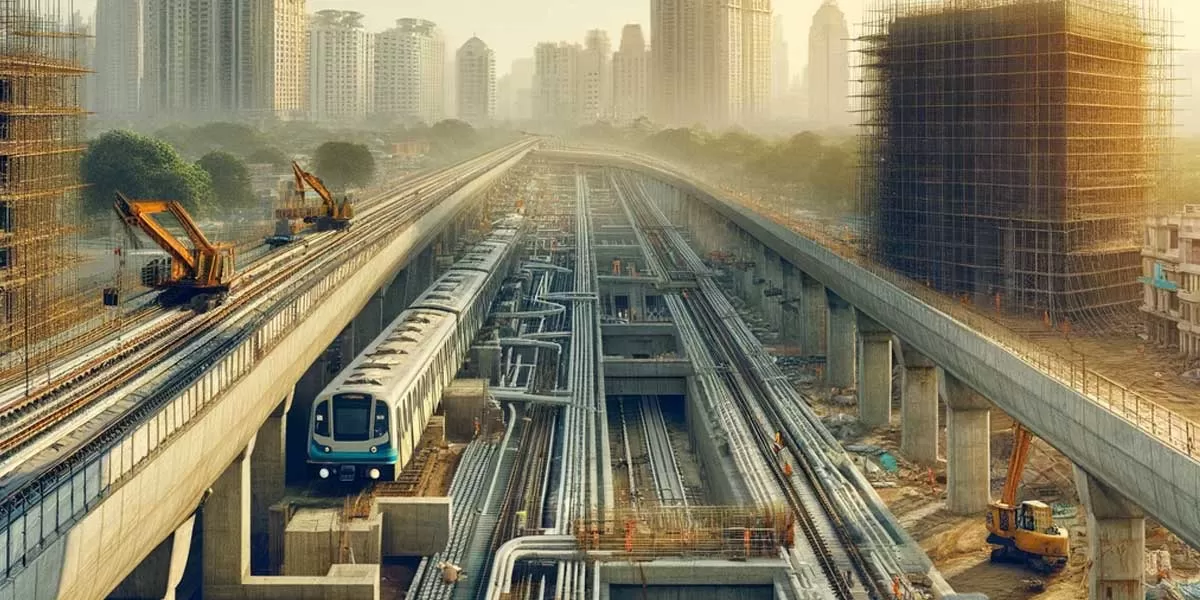The Second Metro Rail Conference was organised by FIRST Construction Council (FCC) in collaboration with Construction World and Infrastructure Today magazines
In an unprecedented surge underscoring the vital role of metro systems in enhancing the quality of life and spurring economic growth in cities nationwide, India’s metro rail growth has expanded from 229 km across five cities in 2014 to a staggering 860 km across 20 cities by April 2023.
Emphasising upon profitability of metro rail systems at the conference held at the Courtyard by Marriott Hotel, Pratap Padode, Founder and President, FIRST Construction Council said, “As per MoHUA - daily ridership across metro systems in the country has already crossed the 10 million mark and is expected to exceed 12.5 million in a year or two.”
Sharing his wealth of experience, Padma Vibhushan (Metro Man) Dr Sreedharan, former MD, Delhi Metro Rail Corporation, said, “The most important things for efficient ridership are an affordable fare structure, last mile connectivity and sufficient parking space. Metro heads should ensure that projects are completed on time and within the estimated cost; fares should be affordable and the operating cost should be reduced to the minimum.”
Highlighting the need to learn from Dr Sreedharan's experiences, Sanjay Bhatia, Upa-Lokayukta of Maharashtra and former Chairman of Mumbai Port Trust, urged project heads to avoid reinventing the wheel. Emphasising upon the significance of public-private partnerships (PPPs) for metro projects even while acknowledging challenges in their execution and operational excellence, he highlighted all current and future metro lines.
Acknowledging both successes and failures in PPPs, KVB Reddy, MD, L&T (Hyderabad) Metro Rail, on challenges said, “There are a lot of challenges especially on the financing side and day-to-day coordination with the government. If corrections are done, these projects can definitely become successful. A regulator is required to resolve disputes between the government and private players and centre and State governments should provide sovereign guarantees for private players.”
Advocating for cost-efficient light metro systems in tier-2 and tier-3 cities, UJM Rao, MD, AP Metro Rail Corporation regarding measures for financial sustainability said, “We need cost-efficient Light Metro system in tier-2 and 3 cities with moderate ridership. It is cheaper by about 20 per cent in capex and 25 per cent in opex than conventional metros making it sustainable and financially viable to the operator and the state governments.”
The conference also delved into improving ridership for metro rail networks with speakers discussing corporate park tie-ups with Metro services. Revathy Pradeep, Researcher, International Council on Clean Transportation (ICCT), said, “Some corporate companies have their own vehicles running and colleagues get pointers for using public transport regularly. It is doable. Almost 90 percentage of the total buses registered in India are private operators and a very high percentage of this is also between corporate buses and school buses so if corporate employee buses shift to electric, that will be a sizable decrease in our emission levels and that will be interesting to see.”
Sharing insights from a multi-city study on metro ridership demographics and emphasising upon the need to attract a broader income range, Vishal Ramprasad, Programme Manager, Sustainable Cities and Transport, World Resources Institute (WRI), said, “They are mostly 20 to 35 years of age and use the Metro largely for work or to go to study. The average income is around Rs 10 – 40,000 per month and the transition is from two-wheelers and buses and not so much from suburban rail and cars since lower income users are priced out and the Metro is trying to attract car users.”
Highlighting energy conservation measures and the use of energy-efficient technologies, B Mangla Prasad, Executive Director (System), Bengaluru Metro Rail Corporation, said, “38 per cent energy saving in traction was obtained due to regenerative braking and inverter-based system for air-conditioning results in energy savings of up to 40 per cent.”
At a point in time when India’s metro network may become the world's second largest, surpassing the US, in the next couple of years and when India is aiming for 5,000 km metro route length by 2047 in 100 cities, both participants and sponsors like Kirloskar Oil, NCC, JSW Steel, Tata Steel, Ultra Max, Kridhan, LivSyt, alike expressed their commitment to shaping the future of transportation and the conference drew attention to challenges and opportunities in the Pan-India Metro landscape and addressed critical measures required for a course correction to ensure success of the Pan-India Metro.





















